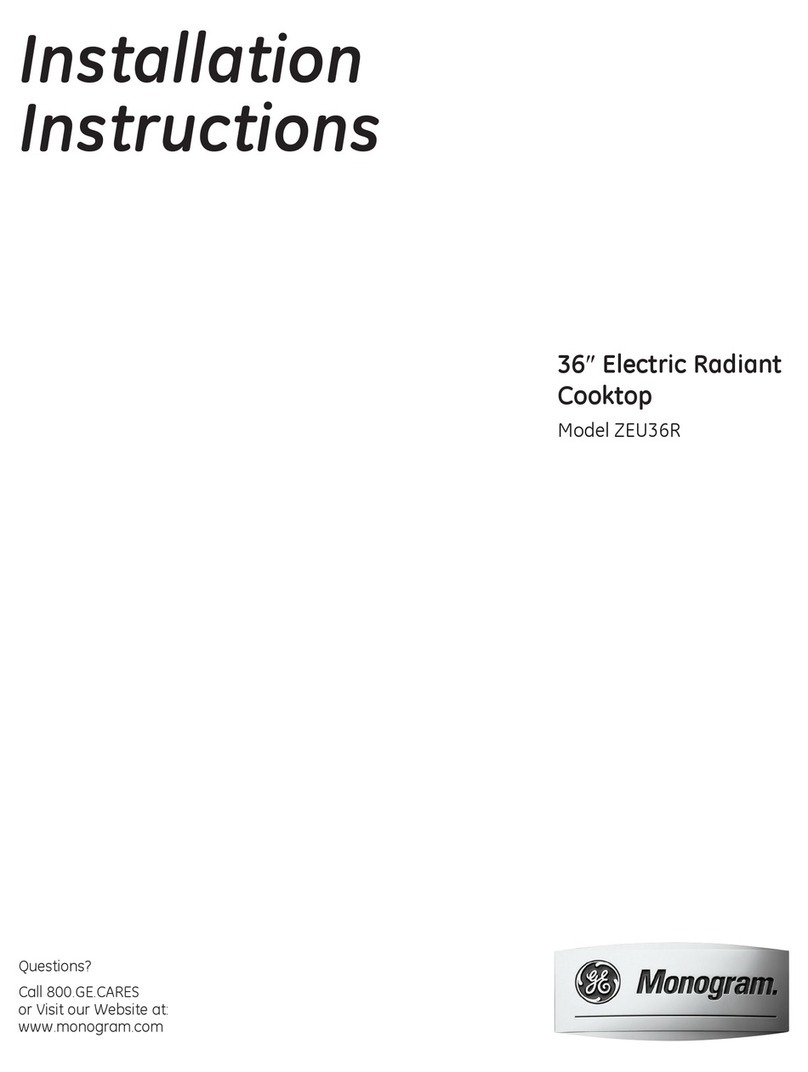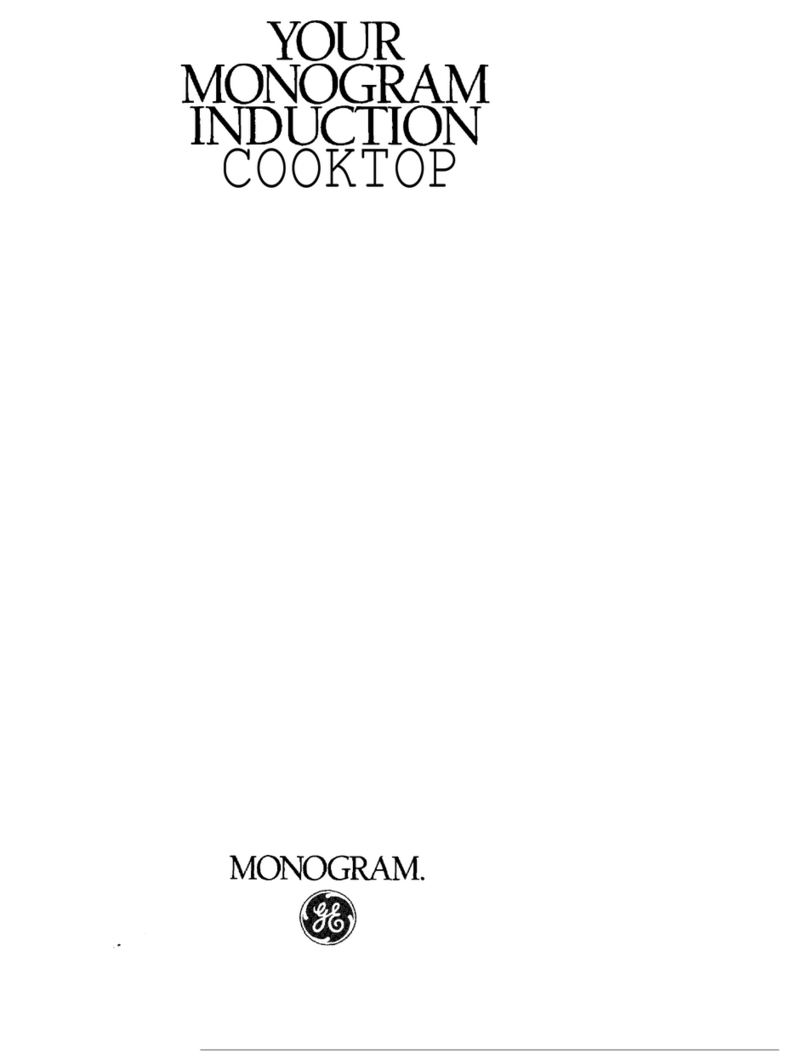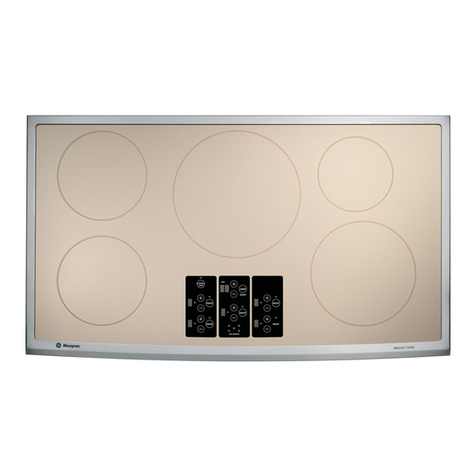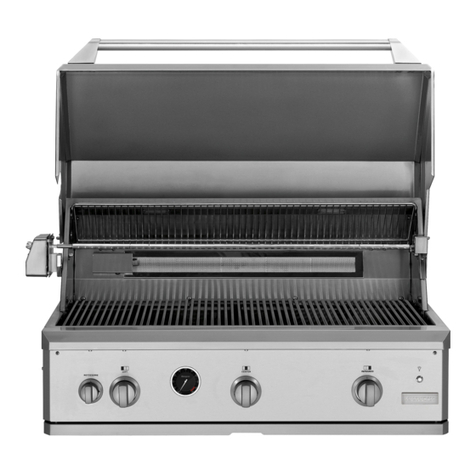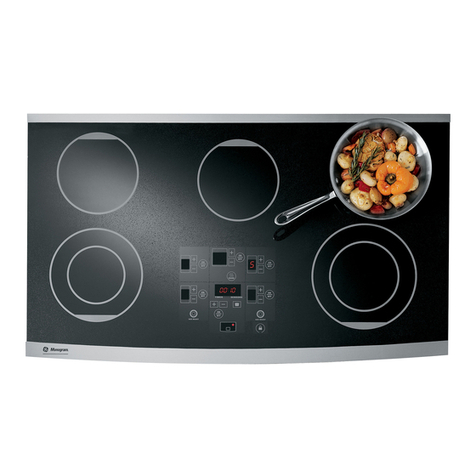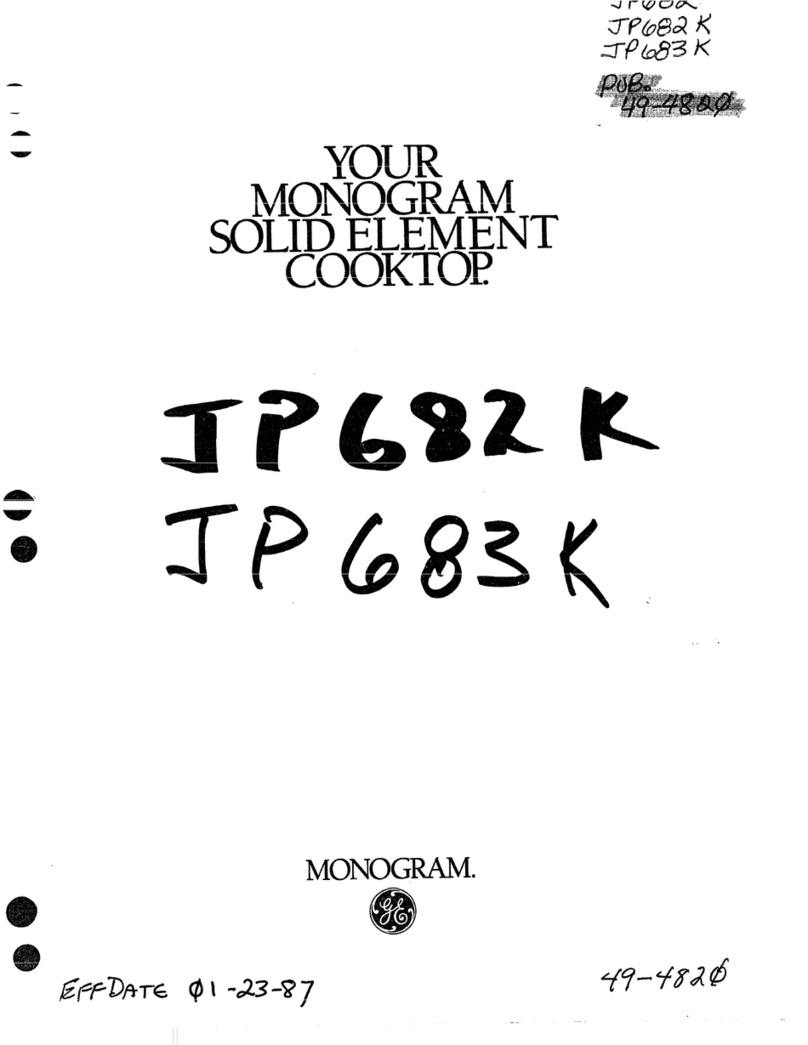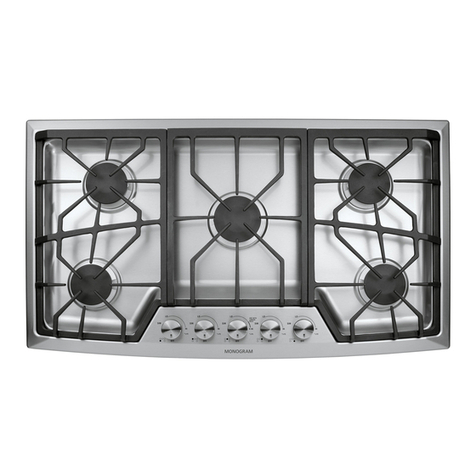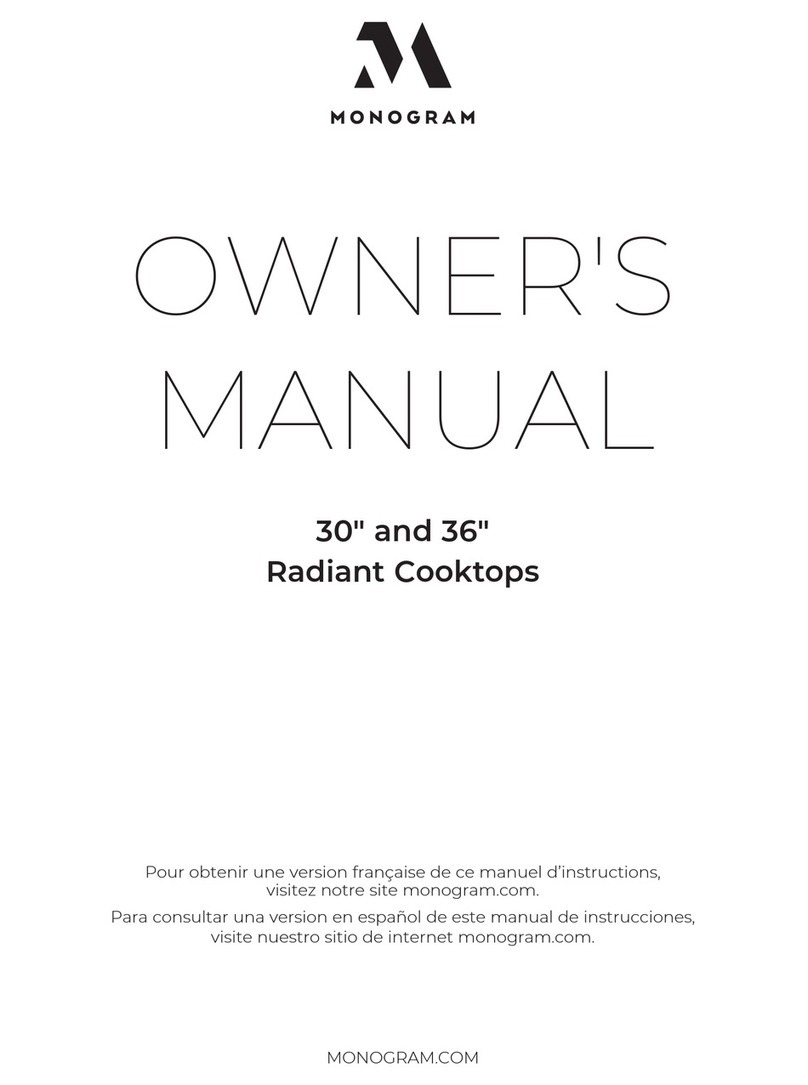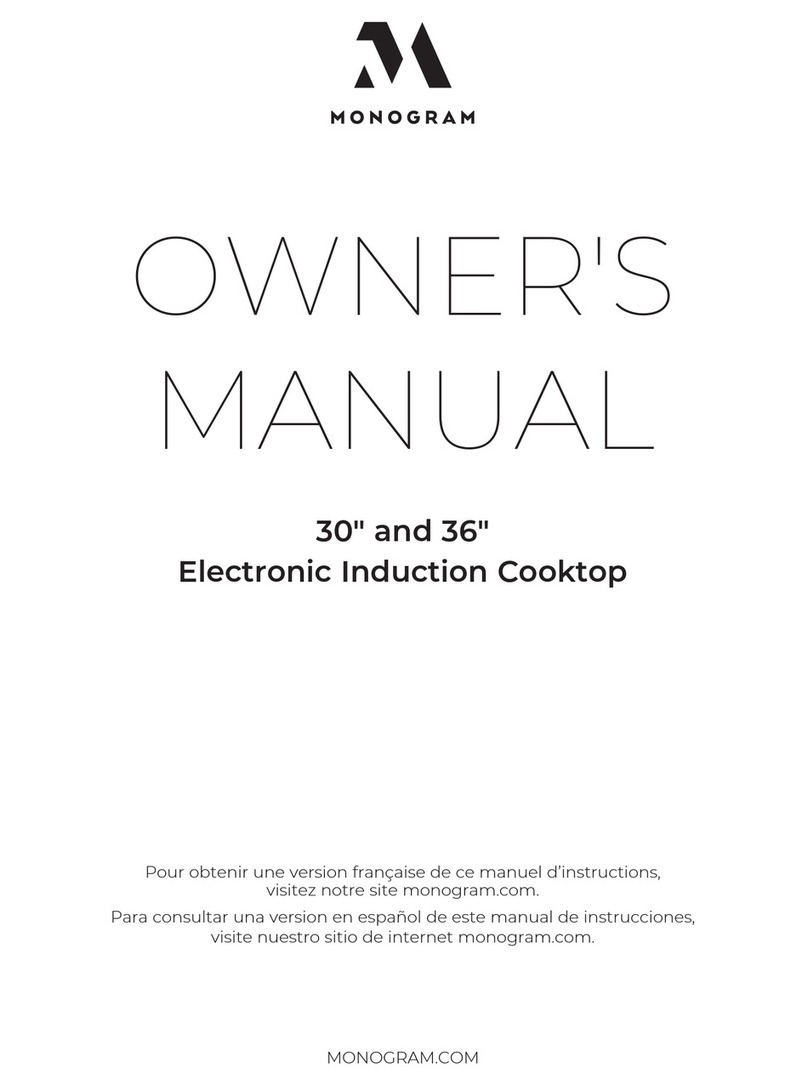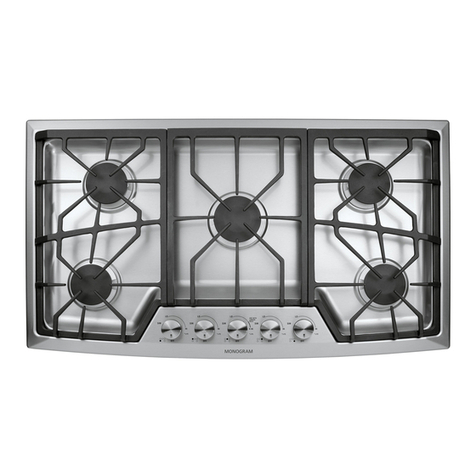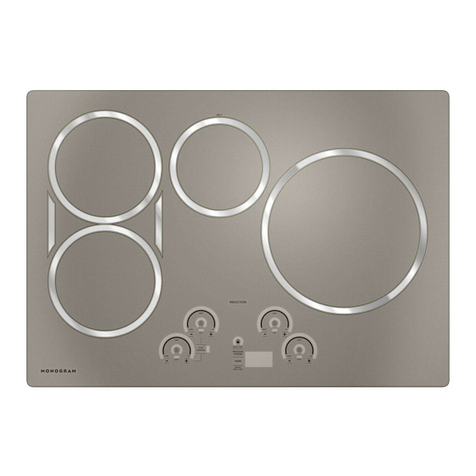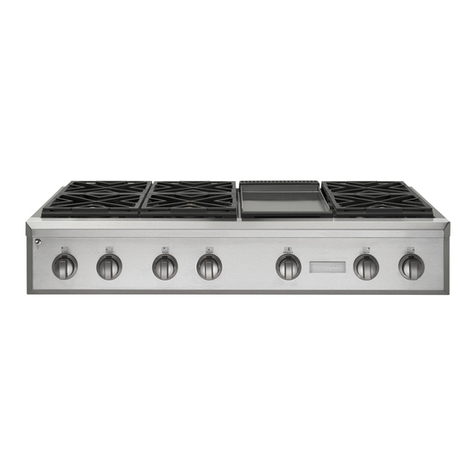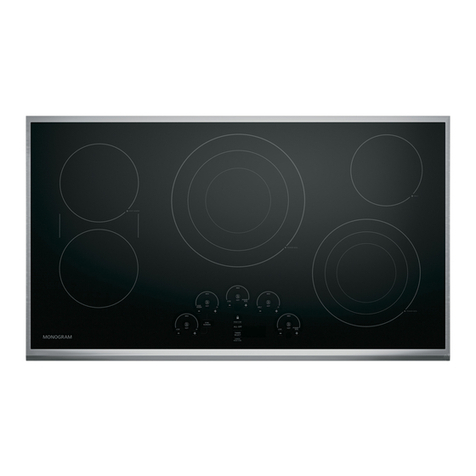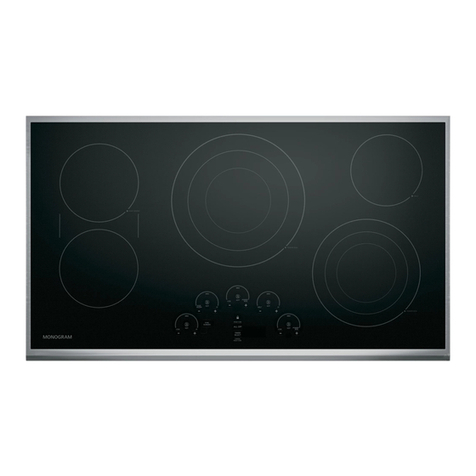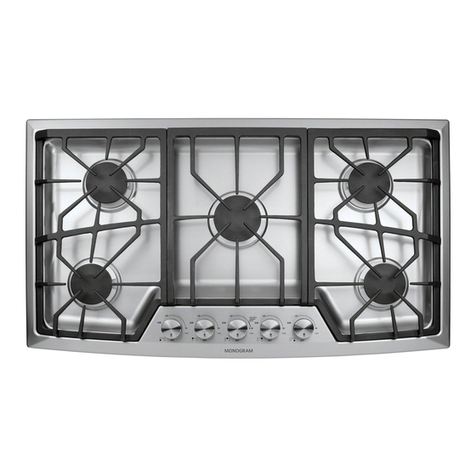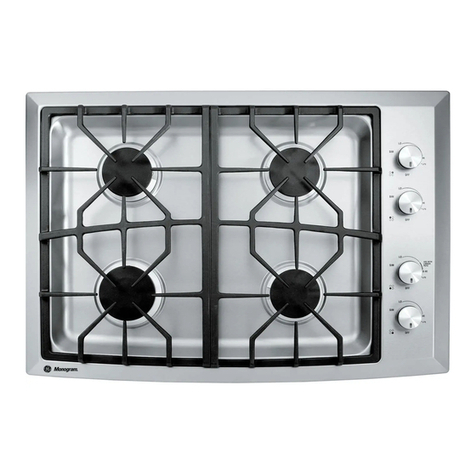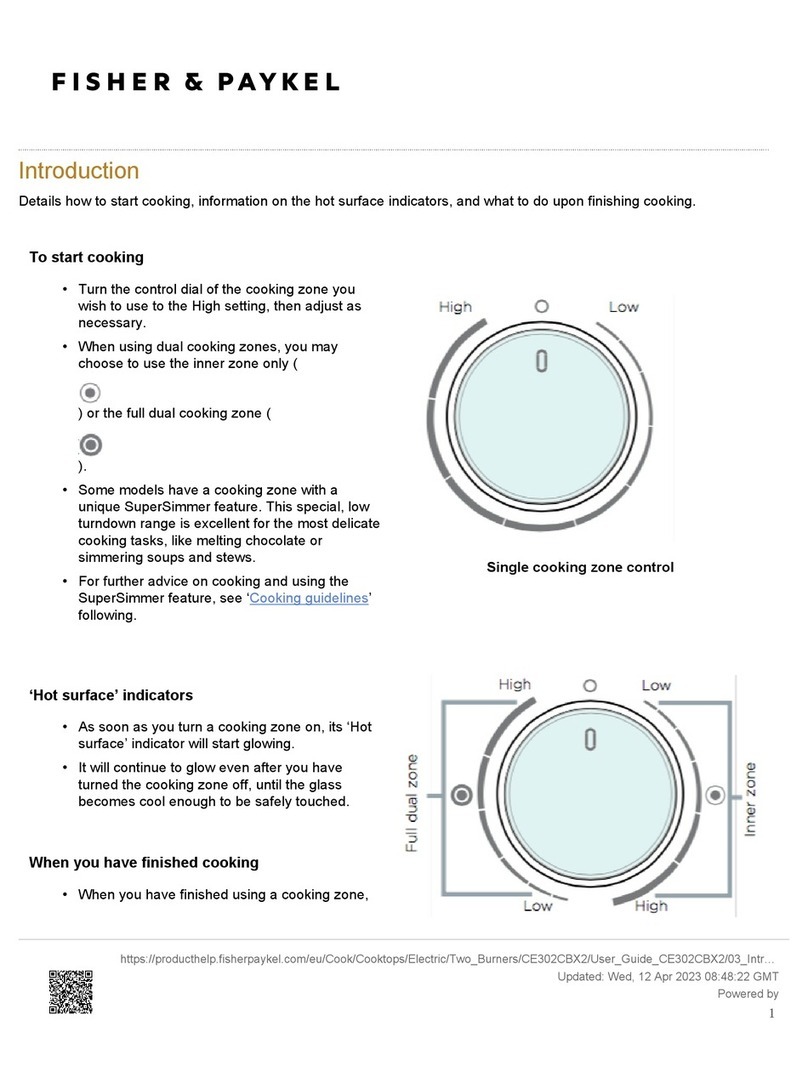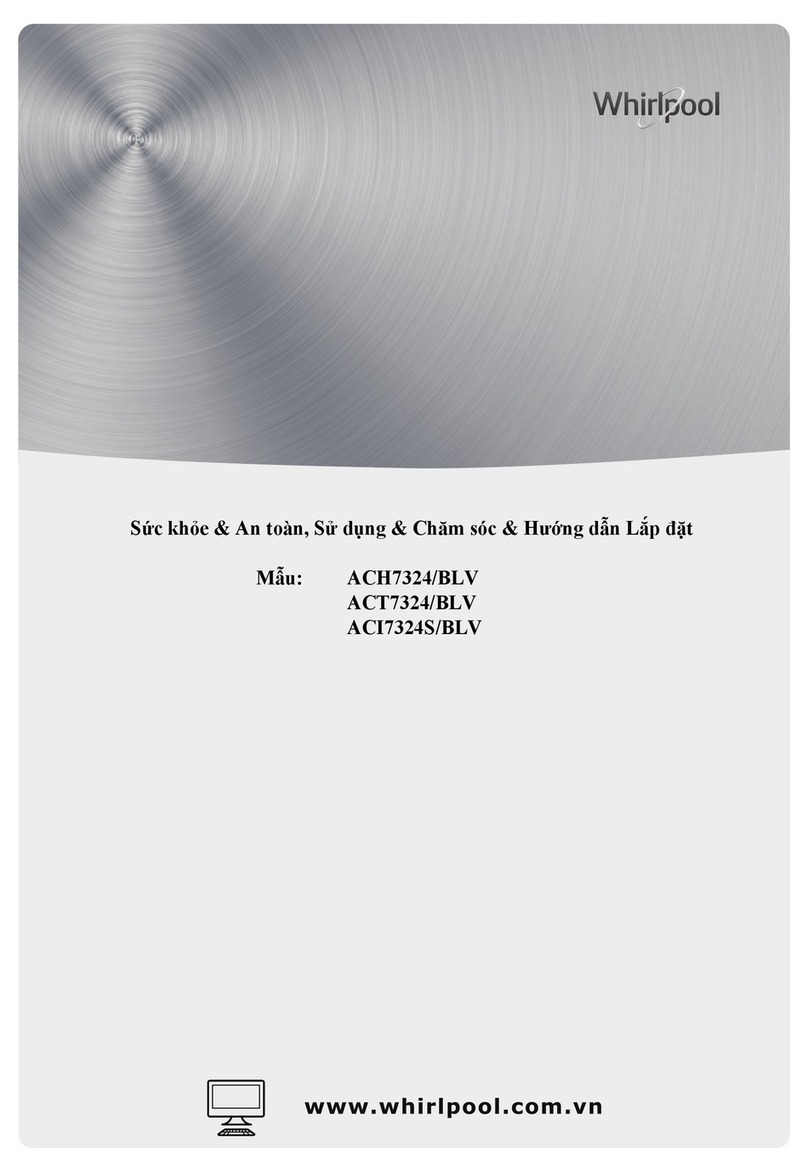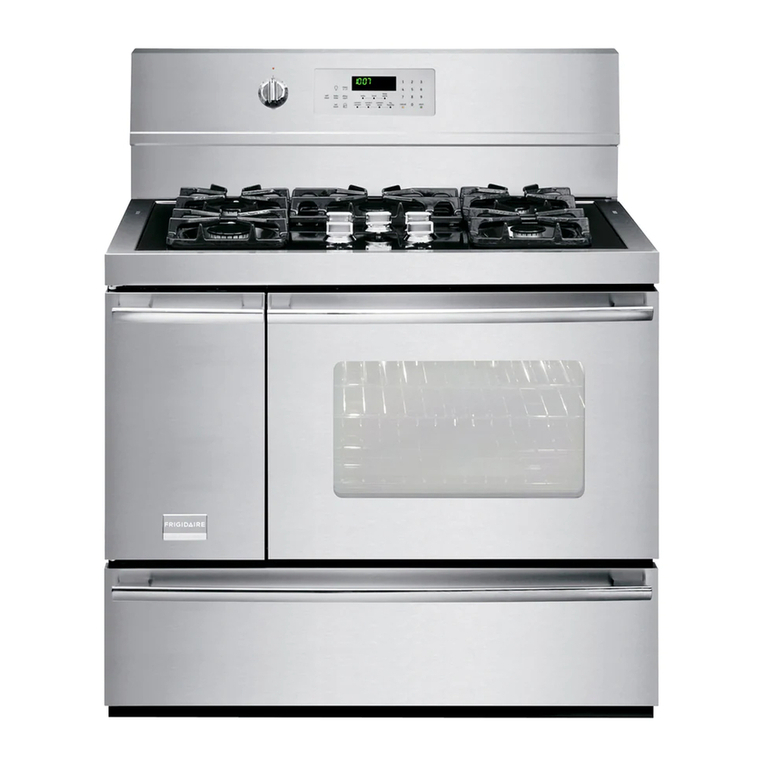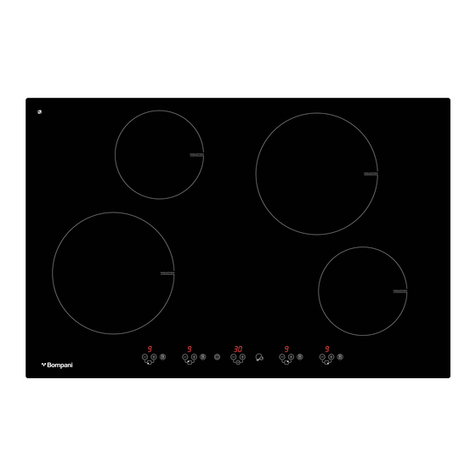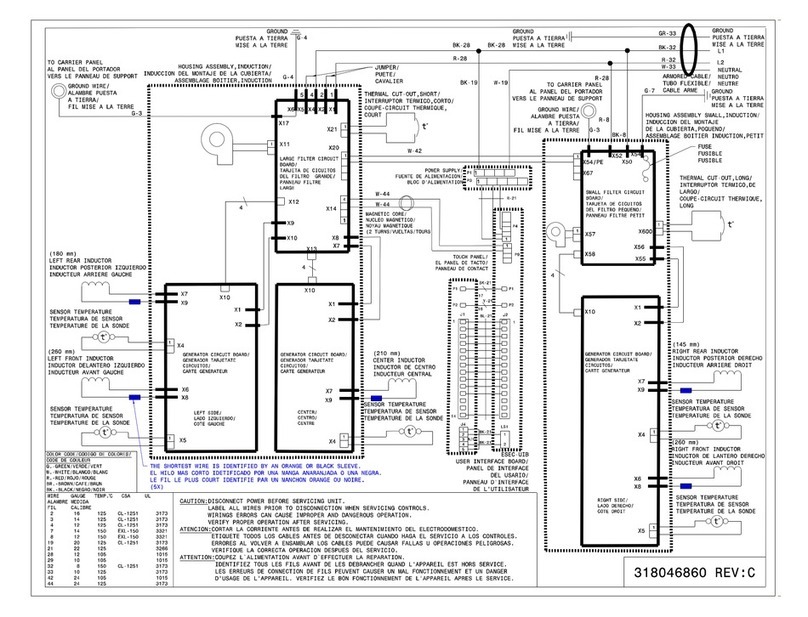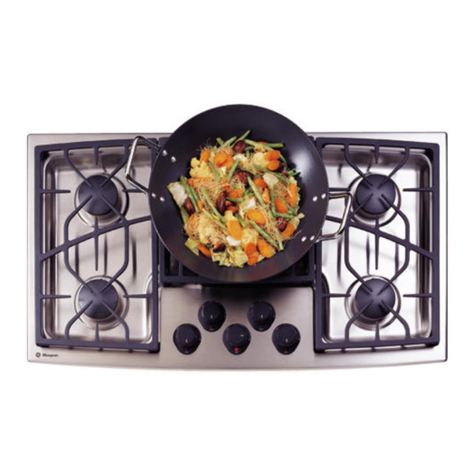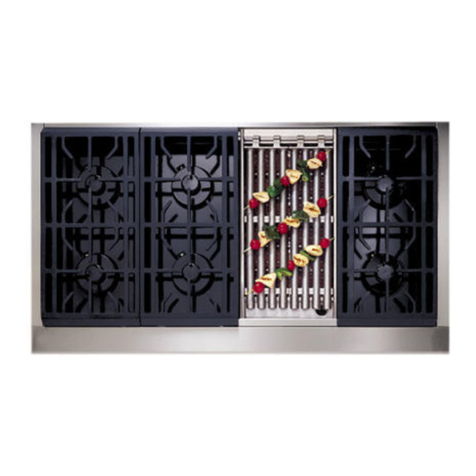Push the control knob down and turn it
counterclockwise to the desired position from
HI to LO or simmer (SIM).
After the burner ignites, turn the knob in either
direction to adjust the flame size.
To turn a burner off, turn the knob clockwise,
as far as it will go, to the OFF position.
•All of the burners can be used for both general
cooking and simmering.
•The X-High setting is intended for use with 10″
or larger cookware.
•Do not operate a burner for an extended
period of time without cookware on the grate.
The finish on the grate may chip without
cookware to absorb the heat.
•Be sure the burners and grates are cool before
you place your hand, a pot holder, cleaning
cloth or other materials on them.
•The indicator light on each knob verifies the
burner is “ON”; however, it should not be a
substitute for visually checking the flame
at the burner.
•Be sure you turn the control knob to “OFF”
when cooking is complete.
Electronic
ignition &
relight
The surface burners are lit by electronic ignition.
All burner igniters make clicking sounds and
spark even when only a single burner is being
turned on. Do not touch any of the burners when
the igniters are clicking.
The burners on this cooktop relight
automatically if the flame goes out. This helps
prevent the inconvenience of having to manually
relight a burner.
Occasionally, the burners may spark if excess
wind or draft blows the flame away from the
burner’s flame sensor.
In case of a power outage, you can light the
surface burners on your cooktop with a match.
Hold a lighted match to the burner; then turn the
knob to the HIGH position. Use extreme caution
when lighting burners this way.
To light
a burner
How to
select
flame size
Watch the flame, not the knob, as you
reduce heat.
The flame size on a gas burner should match the
cookware you are using.
FOR SAFE HANDLING OF COOKWARE, NEVER
LET THE FLAME EXTEND UP THE SIDES OF THE
COOKWARE. Any flame larger than the bottom of
the cookware is wasted and only serves to heat
the handle.
NOTE: The X-High setting produces an extra
large flame. Use 10″or larger diameter
cookware when using high heat settings.
Cookware
Aluminum: Medium-weight cookware is
recommended because it heats quickly and
evenly. Most foods brown evenly in aluminum
cookware. Use saucepans with tight-fitting lids
for cooking with minimum amounts of water.
Cast Iron: If heated slowly, most cookware will
give satisfactory results.
Enamelware: Under some conditions, the
enamel of some cookware may melt. Follow
cookware manufacturer’s recommendations
for cooking methods.
Glass: There are two types of glass cookware—
those for oven use only and those for surface
cooking (saucepans, coffee and teapots). Glass
conducts heat very slowly.
Heatproof Glass-Ceramic: Can be used for
either surface or oven cooking. It conducts
heat very slowly and cools very slowly. Check
cookware manufacturer’s directions to be sure
it can be used on gas cooktops.
Stainless Steel: This metal alone has poor
heating properties, and is usually combined with
copper, aluminum or other metals for improved
heat distribution. Combination metal cookware
generally works satisfactorily if it is used at
medium heat as the manufacturer recommends.
Dual-flame
spill-proof
burners
All burners on your cooktop have two rows of
flames. These dual-flame burners have a simmer
(lower) flame and a main (upper) flame.
When a burner is turned on, the simmer flame
will always light and stay on.
Simmering: The simmer (SIM) setting will use
only the lower flames. Use simmer (SIM) to melt
chocolate, hold delicate sauces or for other
foods requiring low simmer heat.
Primary Cooking: Settings from LO to HI will use
both rows of flames. Use LO to HI for all purpose
cooking. Main Flame
Simmer Flame
Simmer Flame
